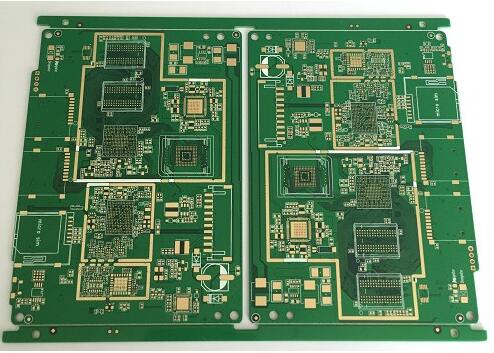Hole hole improvement method during PCB dry film sealing
With the rapid development of the electronics industry, PCB wiring has become more and more refined. Most PCB manufacturers use dry film to complete graphics handling, and the use of dry film has become more and more widespread. However, I still encounter many customers in the process of after-sales service. There are many misunderstandings in the use of dry film, which are summarized here for easy learning.
Improved method of hole break/permeation problem in PCB dry film application
1. The dry film mask shows broken holes
Many customers believe that after a hole appears, the temperature and pressure of the film should be increased to enhance its bonding force. In fact, this concept is incorrect, because after the temperature and pressure are too high, the solvent of the resist layer will evaporate excessively and cause dryness. The film becomes brittle and thinner, and it is easy to break through the holes during development. We have always insisted on the durability of the dry film. Therefore, after the holes appear, we can make improvements from the following points:
1. Decrease the temperature and pressure of the film
2. Improve drilling and piercing
3. Improve exposure energy
4. Decrease the developing pressure
5. After the film is applied, the parking time should not be too long to avoid causing the semi-fluid film in the corner to spread and thin under the effect of pressure.

6. Do not stretch the dry film too tightly during the filming process
2. Permeation during dry film electroplating
The reason for permeation is that the dry film and the copper clad board are not firmly bonded, which deepens the plating solution and thickens the part of the "negative phase". Most of the permeation of PCB manufacturers is composed of the following points:
1. Exposure energy is high or low
Under ultraviolet light irradiation, the photoinitiator that has absorbed the light energy is decomposed into free radicals to initiate a photopolymerization reaction, forming a body-shaped molecule that is insoluble in a dilute alkali solution. When the exposure is insufficient, because the polymerization is not complete, during the development process, the film swells and becomes soft, resulting in unclear lines and even falling of the film layer, resulting in poor bonding between the constituent film and copper; if the exposure is overexposed, it will cause development difficulties and electroplating. Warping and peeling occurred during the process, which constituted infiltration plating. So it is important to control the exposure energy well.
2. The temperature of the film is too high or low
If the film temperature is too low, because the resist film cannot be sufficiently softened and properly moved, resulting in poor adhesion between the dry film and the surface of the copper clad laminate; if the temperature is too high, it is because of the solvent and other evaporative properties in the resist The substance quickly evaporates to generate bubbles, and the dry film becomes brittle, which constitutes warping and peeling during electroplating electric shock, which constitutes permeation.
3. The film pressure is too high or low
When the film pressure is too low, it may cause uneven film surface or gaps between the dry film and the copper plate and fail to meet the requirements of the bonding force; if the film pressure is too high, the solvent and evaporable components of the resist layer will evaporate too much, causing The dry film becomes brittle and will be lifted and peeled after electroplating electric shock.
iPCB is a high-tech manufacturing enterprise focusing on the development and production of high-precision PCBs. iPCB is happy to be your business partner. Our business goal is to become the most professional prototyping PCB manufacturer in the world. Mainly focus on microwave high frequency PCB, high frequency mixed pressure, ultra-high multi-layer IC testing, from 1+ to 6+ HDI, Anylayer HDI, IC Substrate, IC test board,rigid flexible PCB, ordinary multi-layer FR4 PCB, etc. Products are widely used in industry 4.0, communications, industrial control, digital, power, computers, automobiles, medical, aerospace, instrumentation, Internet of Things and other fields.